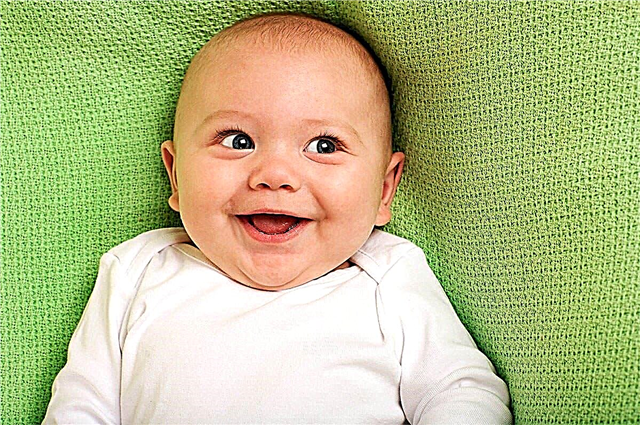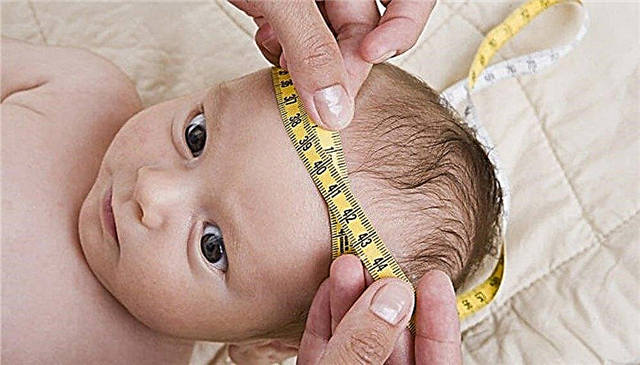
Almost all girls from an early age dream of being beautiful, graceful and able to move smoothly. Someone wants to be ballerinas, there are those who yearn to be a dancer, but rhythmic gymnastics would be a much more interesting choice. A complex training process, which ultimately gives an incredible ease of performing the most difficult elements, a fragile, but at the same time strong and athletic body of a girl - this is what a girl can get from training in rhythmic gymnastics.

Features:
Rhythmic gymnastics is a fairly young sport since it emerged in the 1900s. For its beauty, grace and simultaneous connection with titanic efforts, very soon this type of activity became popular and won a place among the Olympic sports disciplines. Almost everyone at least once saw the competition of gymnasts on TV or live, amazed at the ease of their movements, the refinement of all elements and not knowing how difficult it is to achieve such a final result.
Children in rhythmic gymnastics must withstand enormous loads, therefore, out of 100 girls who come to trainings, only a few reach competitive activity. Lessons for little gymnasts should be structured according to their age and capabilities, which is successfully done by a professional trainer.

If a child complains of fatigue or difficulty in training, then it is worth talking about this with her mentor, solving the issue right away so as not to harm the growing body.
The rhythmic gymnastics section can provide both benefits and harm, therefore it is worth knowingly giving your child to such difficult and demanding activities. Those girls who come to the gym must clearly understand that they will have to work a lot, and most importantly, know what the whole group is working for. An excellent motivation will be watching rhythmic gymnastics competitions on TV with the parents, or even better - going to some championship that will be held in the city. There will be a lot of emotions from such an event. And the more often such trips are organized, the more return will be in training.
Since this type of sports activity is a complex of exercises with objects and music, it is important that young gymnasts have good hearing and the ability to move to the beat of the music. Constant training will help improve these qualities, but those for whom music will be a natural means of expressing emotions through movement will have an advantage.


So, rhythmic gymnastics gives a growing body a lot of advantages.
- Excellent external data. Almost everyone who has been in the gym for more than 5 years retains a good figure, an even posture and a beautiful graceful gait for life.
- Work on character. After hard and frequent training, when there is no strength left for anything, the child can give up and give up everything, but those who stay and fight grow into a strong and strong-willed person who is able to discipline himself in everything. Such children become more independent and responsible, do not lose concentration in a stressful situation.
- Hard training gives you the opportunity develop endurance and strength.
- Using music scores helps improve your hearing, accurately feel the rhythm and tempo of any music.
- The regularity of training allows support the respiratory and cardiac systems in great condition.
- Development of flexibility makes it possible not only to be plastic in life, but also to avoid the risk of injury in a domestic environment due to clumsiness and sluggishness.


Rhythmic gymnastics has many advantages, so it is worth talking about it in more detail and thoroughly.
The benefits of exercise
The benefits of rhythmic gymnastics training are undeniable. It consists in the development of the girl's whole body, the inclusion of all muscles, even the smallest, in the work, a variety of activities that exclude a narrow focus, which allows you to grow a beautiful lady out of an ordinary child. In addition to the sports component, this type of activity also fascinates with its aesthetic side, because girls have to go to training in swimsuits with hair neatly gathered in a bun, which imposes a certain manner to behave both in the gym and outside it.
Those children who attend workouts will favorably differ from their peers both externally, due to the fit of the figure and the presence of relief muscles, and by the abilities that they will already have inherent: flexibility, coordination, the ability to handle different objects, dexterity, and so on. Any sports events in kindergarten and school will be won by gymnasts who are able to make all the necessary efforts and willpower to achieve a result. Artistry and musicality will help to keep up with matinees, various holidays, where the artists will have something to show. Such opportunities for self-realization will give the girl a chance to feel special and gain self-confidence.

Gymnastics training makes it possible not only to evenly and fully develop the child's body, but also to prevent certain types of diseases, if they are at an initial stage: clubfoot and scoliosis. In addition, if you regularly attend classes, you can ensure your child good health and a minimum of colds. Such a difficult sport helps not only to develop muscles, but also character, forcing him to solve difficult problems in stressful situations. All the skills learned in childhood do not go anywhere and help to effectively deal with any adversity in life and gain the upper hand over them.
Those children who attend workouts grow up more conscious, because they spend their time on self-realization, and not on aimless games in the yard, where they will teach everything that they should not know.
The right environment, the right ideals - all this forms a comprehensively developed personality who, having experienced by her own example the complexity of training, its necessity and benefit, will certainly bring her child into sports.


Injuries and problems that can be faced
Rhythmic gymnastics is not only good, there are those components that can harm a young body. Stretching is the basis on which muscle strength is layered, which together give the result the artist needs. The process of obtaining the necessary flexibility for a child is difficult, and most importantly, painful. No matter how flexible a young gymnast is, she will still need to improve her level, which means she will go through painful exercises.
The difficulty of this gymnastics is that in order to get a good result, girls must train a lot. If 1-2 hours are enough for kids several times a week, then athletes who are preparing for the tournament need from 8 to 14 hours daily, to bring the program to an ideal state. All this entails overwork, problems with the back, knees, joints and more. Due to the enormous stress and a small amount of time for rest and relaxation, nervous breakdowns often occur.
Since not only the program itself and its technical component are important for the result in the competition, but also the appearance of the athlete, girls must constantly monitor their nutrition and control weight so as not to gain too much. For some, this becomes a real challenge, provoking a wide variety of problems.


Another problem area is the school, which professional athletes simply do not get to because of constant training. Often, preparation for lessons takes place before and after class, often right in the sports complex, which affects the quality and grades.
The children's psyche can withstand a lot, but it also needs relaxation and switching, therefore, rhythmic gymnastics training, with all its beauty and power, is not suitable for everyone. Those who admire gymnasts and want to be able to do the same can do not professionally, but for the soul and health benefits, excluding all the above risks and getting maximum pleasure.


At what age should you go to training?
Age plays an important role in rhythmic gymnastics. It is important here not to miss the moment when you need to start, so that you do not have to catch up with your peers for a long time. They try to take kids at 2 years old to the developmental sections, where they are introduced to the peculiarities of training, they are taught to repeat movements after the coach, to remember and show certain actions. From the age of 3, you can try more serious classes, although children are still too small for a full-fledged sports section at this age.
Pediatricians unanimously insist that it is impossible to subject children of three years of age to serious stress, since they have not yet completed all development processes. In addition, babies can hardly repeat the various coordination movements that will be given in training. Another reason why you shouldn't give it up to sports is the increased fatigue of a child of this age. Three-year-olds usually attend kindergarten, sleep during the day and without this daily cycle will hardly remain active, vigorous, and most importantly, tuned in to classes.


It is best to send to the rhythmic gymnastics section at 5 years, the deadline is 6 years, when the child's body is fully prepared for work. This period is marked by the most favorable indicators of flexibility development, which decrease every year, and it becomes more difficult to work with girls. Such early dates are due to the fact that by the age of 20, the career of gymnasts ends, and they can devote themselves to any other activity. In order to have time to do as much as possible, it is worth starting training activities on time.
The very process of the lesson is built in different ways, depending on the age of the pupils. For kids, a game is being thought out that uses those items that will be needed in the future: a ball, a hoop, a jump rope. Three-year-olds do not need to do anything difficult with objects, and the training process itself is more like a game. Such activity develops a desire to attend classes, and the child does not notice how he gradually moves from play to teaching the bridge or another rather complex element.
A feature of this gymnastics is the compulsory musical accompaniment, therefore, children are initially taught to it, learning various movements for a specific accompaniment at a different pace. The older the children get, the more difficult tasks they receive. After 7–8 years, work begins on mastering the inventory, because the muscular corset is already fully prepared and the level of flexibility is at the proper level. When the shells begin to conquer, it comes to competitions, which are first held at the intra-club level, after - at the inter-club level, and only then is participation in the national championships.
Specificity of competitive activity
Since rhythmic gymnastics is an Olympic sport, then the assessment is carried out according to the Olympic system. To participate in tournaments, you must have certain qualifications. If this is a city-level competition, then all athletes of the city can participate, regardless of the level, divided by age. The gradations can be different, and this is prescribed in the position for each sporting event.
If we are talking about more serious competitions, then the categories are necessary, and the higher they are, the greater heights can be achieved by participating in prestigious tournaments. The most desirable for athletes are: European, World Championship, All-Russian and Olympic Games.

If we talk about the awarding of categories, then in this sport it is carried out in this way:
- at the age of six, a girl can receive only 3 youth sports category;
- at 7 and 8 years old, it can be 2 and 1 discharges of the same level;
- upon reaching 9 years old, you can apply for the 3rd category, which will no longer be youthful;
- at 10 years old it can be the 2nd category;
- by the age of 11, you can get 1 adult category;
- at the age of 13, with successful sports activity, you can get the title of candidate for master of sports;
- at the age of 16, successful athletes receive the title of masters of sports and the international level of this title.
To participate in competitions, girls prepare a specific program, in which they use the equipment necessary for her. It is good if the artist owns all the apparatus equally: this will give her higher marks from the jury. Competitive activity includes performing with such apparatus as:
- tape;
- hoop;
- clubs;
- ball;
- skipping rope.

The performances are prepared in such a way as to amaze the judges and spectators with a variety of tricks, complex elements, but besides that, beautiful swimsuits and catchy makeup are also important, which make the participant bright and memorable. External data for this type of activity are of tremendous importance, therefore it is so important to have an excellent figure, proportional facial features and be able to work both with objects and with the public, causing her respect and an enthusiastic reaction.
The training process does not require beautiful costumes and cosmetics, so here the emphasis is placed on practicing the technique of all elements. To minimize injuries, girls use knee pads, especially when practicing difficult tricks. A clear and beautiful execution of the program in competitions is the result of very hard work in the gym under the guidance of an experienced coach who found a common language with the pupil, which is also important for this level of training activity.
Of course, doing gymnastics is not easy for both children and their parents, who must also become a part of this whole process: encourage the child, help him and push him to conquer new heights. Another difficulty is the high cost of this sport due to many hours of training almost every day.

Such trainings are quite expensive, so not everyone can reach the professional level. Of course, girls who participate in competitions and bring victories can be helped by sponsors, but even with them the cost will remain considerable.
A separate conversation about the equipment with which girls train and perform at tournaments. For kids, you can buy something inexpensive and far from professional, but those who crave victories and results cannot do without buying the entire set of equipment that girls use every day in the process of training, and an additional set specifically for competitions.
Another cost item is costumes. They need to be sewn for each performance individually, choosing the color, pattern and pattern that will look most advantageous on the athlete, therefore only a few can participate in all tournaments of the year.
Often, the coach herself distributes who will go and where, so that all pupils perform evenly. It is for these reasons that not everyone can engage in rhythmic gymnastics at a serious level.
For professional advice on rhythmic gymnastics for children, see the following video.



